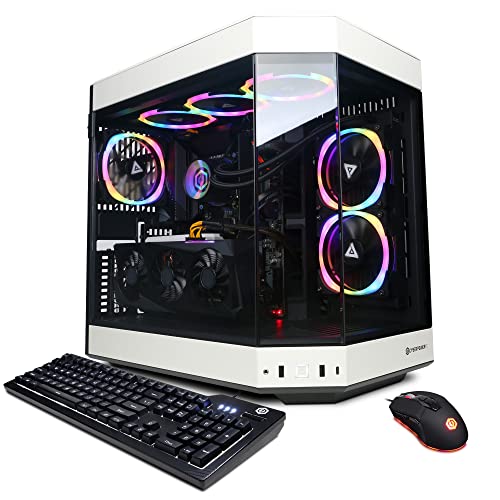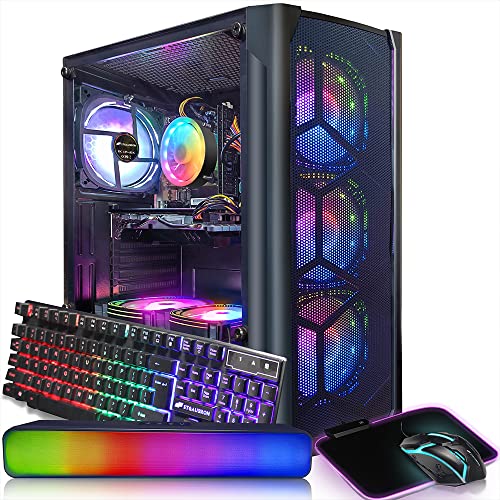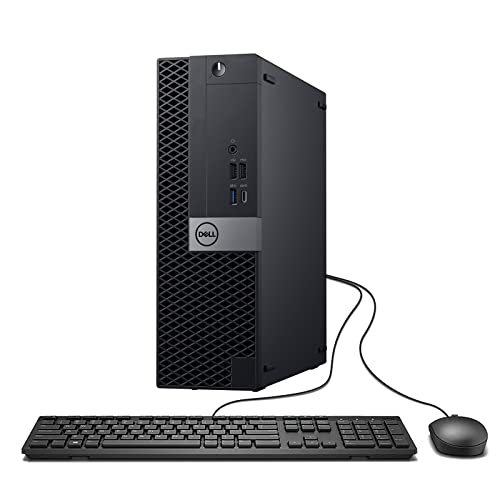Unleashing Your Creative Engine
In the dynamic world of game development, a custom PC is more than just hardware—it’s a creative powerhouse that enables designers, programmers, and artists to build, test, and optimize immersive experiences. A well-engineered game development workstation combines rapid processing, advanced graphics capabilities, expansive memory, and a seamless, ergonomic environment to nurture your creative vision from concept to launch. This comprehensive guide outlines the critical components and system designs tailored to the multifaceted demands of game development.
#### High-Performance Processing for Game Creation
At the core of a gaming development PC lies a robust multi-core CPU. Game engines such as Unreal Engine and Unity, along with development tools and integrated development environments (IDEs), require fast computation and parallel processing capabilities.
- **Multi-Core Efficiency:** Processors from the Intel Core i9 or AMD Ryzen 9/Threadripper families with 8, 10, or more cores and high clock speeds ensure that compiling code, rendering scenes, and running simulations occur seamlessly.
- **Hardware Virtualization:** Utilizing virtualization capabilities like Intel VT-x or AMD-V enables developers to test multiple builds and run isolated environments simultaneously, streamlining the development cycle.
#### Advanced Graphics Capabilities for Realistic Rendering
Modern game development is driven by detailed 3D environments, realistic lighting, and fluid motion. A dedicated GPU is essential for accelerating real-time rendering and offloading arduous graphical computations.
- **Powerful Graphics Cards:** Select professional-grade GPUs—such as NVIDIA’s GeForce RTX or AMD’s Radeon RX series—which offer ample VRAM and built-in ray tracing capabilities, ensuring that in-engine previews and high-quality renders keep pace with creative demands.
- **GPU Acceleration:** By leveraging compute frameworks like CUDA and DirectX 12 Ultimate, your PC can efficiently accelerate physics simulations, lighting calculations, and shader processing, drastically reducing render times.
#### Ample Memory and Rapid Storage for Data-Intensive Projects
Game development projects often involve enormous textures, 3D models, audio files, and source code repositories. Efficient multitasking and swift access to data are paramount.
- **High-Capacity RAM:** A minimum of 32GB of high-speed DDR4/DDR5 memory is recommended, with 64GB or more becoming crucial for resource-intensive projects that demand smooth multitasking between design tools and testing platforms.
- **Ultra-Fast Storage Solutions:** Utilize NVMe SSDs as the primary drive to host the operating system, game engine installations, and active projects. Complement this with high-capacity SATA SSDs or RAID-configured HDDs for archived assets, ensuring rapid boot time and near-instant loading of large files.
#### Multi-Monitor Setups and Ergonomics for Creative Workflow
Game development is inherently iterative and collaborative, often requiring simultaneous monitoring of code editors, design tools, and real-time previews.
- **Expanded Desktop Real Estate:** A multi-monitor configuration—typically a primary 4K display for engine previews paired with secondary screens for code, documentation, and resource management—maximizes productivity and creative flow.
- **Ergonomic Design:** Invest in adjustable monitor arms, anti-glare panels, and ergonomic peripherals such as a mechanical keyboard and precision mouse. A well-organized, clutter-free workstation minimizes fatigue and supports extended creative sessions.
#### Connectivity, Peripherals, and Collaboration Tools
A development PC must integrate seamlessly with external devices and collaborative platforms, forming the backbone of a modern, networked creative studio.
- **Diverse I/O Options:** A motherboard equipped with multiple USB 3.2 ports, Thunderbolt, and high-speed Ethernet interfaces enables you to connect external storage arrays, VR peripherals, and digital drawing tablets.
- **Collaboration-Friendly Hardware:** Including high-quality cameras and microphones can facilitate remote collaboration, live demonstrations, and immediate feedback sessions with team members, further bridging the gap between creativity and functionality.
#### Software Optimization and Engine Integration
Beyond raw hardware, an optimized software ecosystem is crucial for maximizing the potential of your game development PC.
- **Tailored Operating Environment:** Select a streamlined operating system configured specifically for creative work. Whether using a stable Windows platform or a customized Linux distribution, ensure that your system is free from unnecessary background processes that could drain resources.
- **Optimized Development Tools:** Integrate industry-standard game engines and development tools with dedicated graphics drivers and optimally configured resource management. Regular updates and driver optimizations will help maintain compatibility with emerging standards and software features.
#### Cooling, Power Efficiency, and Continuous Reliability
Game development workflows often push a system to its limits. Ensuring consistent performance over long hours demands effective cooling and stable power delivery.
- **Advanced Thermal Management:** Invest in a quiet, high-performance air cooling solution or a custom liquid cooling loop that keeps temperatures in check. A well-ventilated chassis with smart fan controllers ensures that your critical components operate within safe thermal parameters even under intense load.
- **Reliable Power Supply:** An 80 PLUS Gold or Platinum certified modular PSU with adequate wattage overhead guarantees stable power delivery and minimal energy waste—a key factor for sustained 24/7 development environments.
#### Future-Proofing and Scalability
The realm of game development evolves rapidly, so planning for future upgrades is essential to protect your investment.
- **Modular and Upgradeable Architecture:** Choose a motherboard with extra DIMM slots, multiple PCIe lanes, and additional storage interfaces, ensuring that you can expand memory, add additional GPUs, or integrate new peripherals as development needs grow.
- **Cloud or Hybrid Integration:** Consider hybrid workflows where some tasks like rendering or simulation testing can be offloaded to cloud services, thereby balancing local computational limits with scalable external resources.
#### Conclusion: Empowering Creative Innovation
A custom PC for game development is an indispensable tool that transforms raw computing power into a canvas for innovative storytelling, dynamic interactivity, and immersive digital worlds. By meticulously selecting high-performance processors, robust GPUs, copious amounts of memory, rapid storage solutions, and ergonomic, interconnected peripherals, you build an ecosystem that supports every phase of development—from rapid prototyping to detailed final rendering. This future-proof workstation is designed not only to meet today’s rigorous demands but also to seamlessly adapt to tomorrow’s breakthroughs, empowering you to bring your game development visions to life.
---
### SEO Keywords:
custom PC for game development, game development workstation, high-performance game PC, multi-core CPU for gaming, advanced GPU for game development, NVMe SSD game PC, high-capacity RAM PC, multi-monitor development setup, ergonomic game dev workstation, future-proof game development PC, virtualization for game testing, modular PC for game design.
View our related products
See more



Custom PC for Game Development
Related Articles
Essential High-Performance PC Components You Need Now
Upgrade your setup with the must-have parts for unbeatable gaming and productivity
Top Picks for Best High-Performance PCs
Find the perfect power machine for gaming, work, or creative projects
Your Guide to the Best High-Performance PCs
Find the Right PC for Your Gaming and Creative Needs
View our related products
See more





